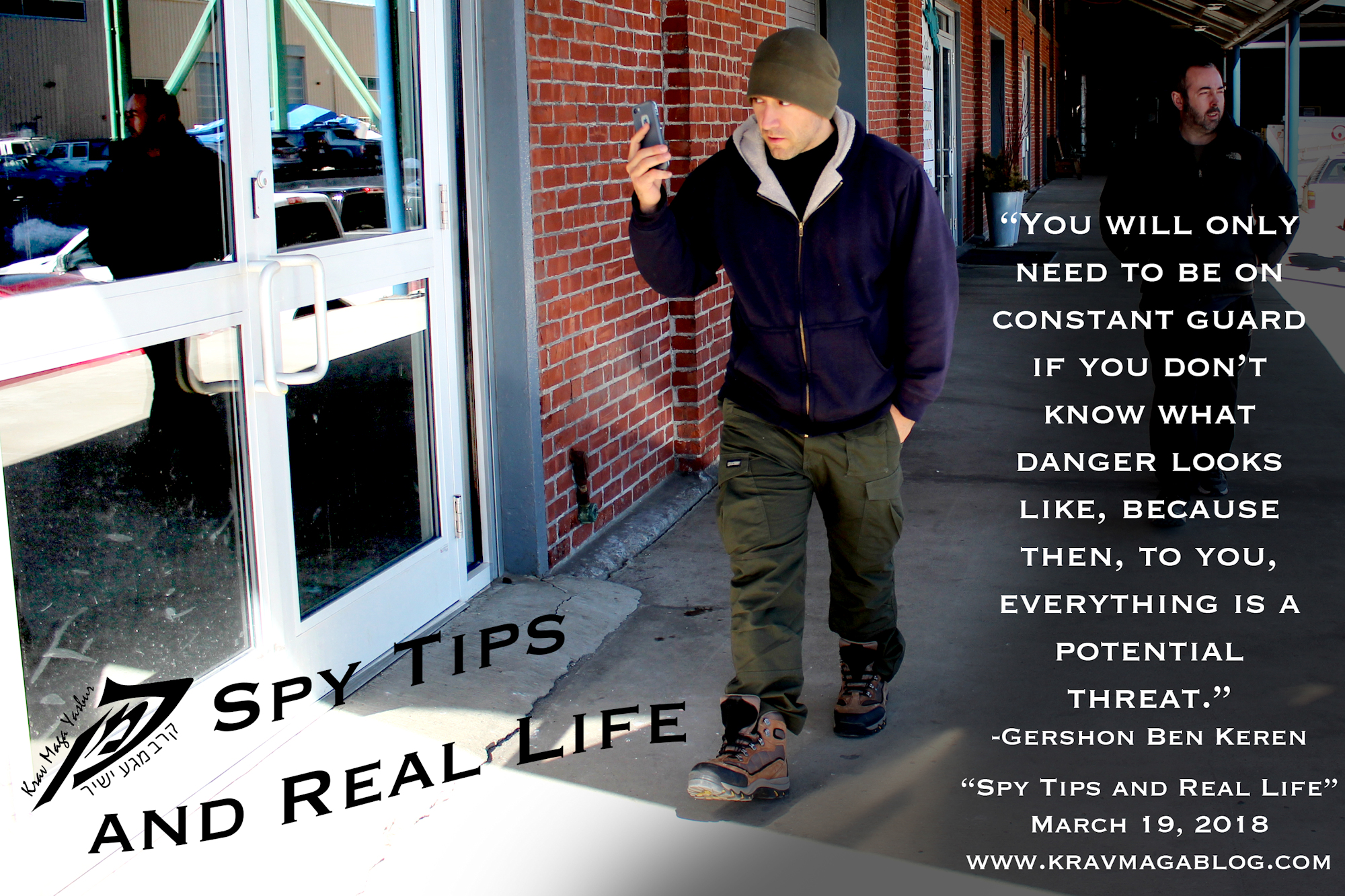It’s worth remembering, as we go about our daily lives, that we are not in fact Jason Bourne, James Bond or Jack Bauer, and that it is highly unlikely that a well-resourced individual or group is actively hunting us down, with the goal of capturing or terminating us. Because of this, our situational awareness must be appropriate to the situations and the environments in which we spend our time. Many people use Jeff Cooper’s color codes, as a means of understanding when to escalate awareness, however they can also be used as a tool to actively de-escalate awareness; of learning when to relax and “stand down”. For many people, who haven’t worked in the security arena, this idea will seem foreign and even dangerous, as they may hold to an idea that we should always be ever-vigilant – after all, you never know when someone is going to attack and assault you i.e. it could happen anywhere, at any time. I know people who believe that the moment you stop scanning your environment for danger (whatever that looks like), will be the moment you are attacked. Their message being that you should never let your guard down. There may be times, when you need to up your awareness, but equally there are times when you can lower it. You don’t need to live your life in code Red.
It's easy to get caught up with “Spy Tips”, believing them to be useful and necessary tools, for understanding and operating in a particular environment. One of these “tips” is to use reflective surfaces, such as shop windows etc. to check what is going on behind you – another, simpler method is to turn around and look. If there is something going on behind you that warrants your attention, in almost every instance, there is no need to be covert about taking a closer look. If someone has identified me as a target and is acting and behaving in a way that demonstrates that they have harmful intent towards me, I will gain few - if any - advantages by “pretending” I haven’t noticed this. It might be appropriate to make it look as though you haven’t noticed them, if it’s part of a movie script, where you need to piece together other clues etc. to work out who, and what organization, is behind the campaign of surveillance against you. However, in real-life, letting the person know you have seen them, is more likely to deter and prevent them from acting against you, than trying to make them believe that you are not aware of their presence.
This attitude of pretending not to notice someone who is looking at you, reminds me of conversations between teenage girls, when one notices that a boy from their school, is looking at them. Embarrassment, at not being able to socially handle a situation, and interact with people whose intent makes us uncomfortable, is probably one of the biggest barriers to implementing effective self-protection strategies. There is often a belief that it is better to pretend something hasn’t happened, say nothing, and walk away, than deal with an uncomfortable situation. This is one of the appeals of using reflective surfaces, rather than turning around, to see what is happening behind you: it means you don’t have to interact with the situation. Unfortunately, most people want a silver bullet, for dealing with uncomfortable, and socially-awkward situations, and want these solutions to involve them saying or doing nothing. However, self-protection and personal safety strategies and solutions, are about keeping you safe, and are not primarily about your potential sense of embarrassment at having to interact with, and sometimes, confront others. Predators create and feed off social awkwardness; they know we try to avoid it, and are more likely to take a route that saves our embarrassment, even if it compromises our safety. If you need to know what is going on around you, look. You don’t have to try to find mirrors and windows, to do this.
If you believe that someone is following you in your car, there is little to be gained by being covert about this. You are not Jason Bourne, who is going to lure the car, into a deserted spot in order to ambush them. Your goal should be to get them to stop following you, and one way to do that is to let them know that you are aware of their presence. I was told of one person, who advised that you should pull into a shady spot, and then watch them go by. Why? To hunt them down later? To find their car, and then booby trap it? If you find – and believe - that different people are perpetually following you, there are probably some lifestyle choices you’ve made that you may want to look at. As important as we may believe we are, few of us are important enough to be in perpetual danger. This is one of the reasons I’m able to relax, and not actively search for danger, in every environment I’m in. It’s important to know when to stand down.
You will only need to be on constant guard if you don’t know what danger looks like, because then, to you, everything is a potential threat. If you use reflective surfaces to see behind you, what are you looking at, what are you looking for? You can look in the rearview mirror of your car, and your wing mirror, due to habit, when you cross a lane, but not actually take notice of what you see, and this illustrates one of the problems with “Spy Tips”. Yes, you can use a shop window to see what is behind you – physics makes that possible – but what are you looking for, and what do you do when you see it? It’s the same issue, when runners are told not to run with headphones/ear-buds in; you have a greater potential to be aware of things, now that you aren’t focused on the music, and have your hearing to pick up on noises, etc. But which noises denote danger? Which behaviors and actions of others denote danger? And more importantly, what do you do, when you see and/or hear these?
At face value, these “spy tips” seem to give us an edge/advantage e.g. I can see what’s going on behind me without having to turn and look, but when is this actually relevant? It’s something that appeals to our fear of having to interact with what may be behind us, but from a personal safety point of view if something is worth looking at, it’s usually worth looking at, rather than trying to pick it up in the reflection of a napkin holder, even if this is something that Jason Bourne would do. We are not covert operatives, in our day-to-day lives, and shouldn’t pretend to be, or see ourselves that way. If we understand what violence looks like, and its warning signs, we will notice it; if we don’t, we will have to constantly look for anything and everything, and actively question it. We should know the situations and environments when we can “stand down”, and if find ourselves in situations and locations where we can’t, we should actively look to change them. If you are Jason Bourne, James Bond or Jack Bauer, then you better position yourself, where you can use every reflective surface to give you an in the moment 360 degree view of what’s going on, because they are coming to get you.
Share:

Gershon Ben Keren
2.8K FollowersGershon Ben Keren, is a criminologist, security consultant and Krav Maga Instructor (5th Degree Black Belt) who completed his instructor training in Israel. He has written three books on Krav Maga and was a 2010 inductee into the Museum of Israeli Martial Arts.
Click here to learn more.

